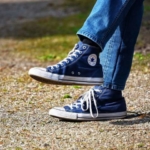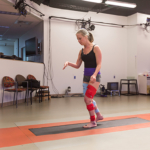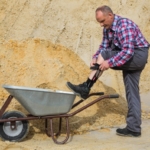As walking movement grows, neighbourhood walkability gains attention
| Come join us at our next Walk with a Doc! |
| Location: Confederation Park, Calgary Walk Information: We walk on the 2nd Friday of Every Month! at 8:50 am To Register, please call Sandi Gowriluk 403-284-3726 ext. 206 |
David Sabgi MD, first started encouraging his patients to walk when he was a medical student in the mid-’90s. But by 2004, it was clear to the cardiologist that his longstanding advice wasn’t working. “[It] took me 9 years to realize it was ineffective for me to just tell or even beg them [to walk],” he said.

Jennifer Abbasi, Journal of The American Medical Association June 29, 2016
Patients would agree to start walking regularly, but when they came back to his Columbus, Ohio, office 6 months later for their follow-ups, they admitted that they hadn’t stuck with it. Frustrated and grasping at straws, he asked some patients if they would join him and his family for a walk in a local park. A few months later, in April 2005, roughly 100 patients and community members showed up for his first stroll. He called it Walk with a Doc. “It was evident early on that we had stumbled onto something big that could affect millions of lives,” he said. “We knew we had to make it replicable across the country and beyond.”
The idea caught on, and today there are almost 250 Walk with a Doc chapters around the country, with roughly 3000 physicians and other health professionals and more than 200 000 community members participating in regular group walks. “We look at it almost like a bonfire on a beach that has continued to grow,” said Sabgir, who today sees heart patients at Mount Carmel St Ann’s Hospital outside Columbus.
Many of the group’s doctors and community members are starting to advocate for “walkability” improvements in their neighbourhoods, Sabgir said. In doing so, and in keeping up their regular walking practice, they’re becoming part of a larger movement around walking and walkability that’s gaining momentum around the nation.
“Walking organizations across the country are working in their communities to try and do such things as improve or fix sidewalks, [and] have better crosswalks, slower speeds, and longer crosswalk signals,” said Kate Kraft PhD, national coalition director of pedestrian advocacy group America Walks. “They’re working to create a safe environment for walking and greater walkability.”
Physicians and public health officials are desperate to get the population moving. About 1 in 3 deaths in the United States are caused by cardiovascular disease. And the most recent analysis of National Health and Nutrition Examination Survey data from 2013-2014 estimates that 35% of men in the United States, and 40.4% of women, are obese (Flegal KM et al. JAMA. 2016;315[21]:2284-2291).
Increasingly, walking is seen as a way that most people can meet federal recommendations for adults to get at least 150 minutes of moderate-intensity aerobic physical activity every week to improve cardiovascular health, prevent weight gain, and achieve many other health benefits. “Often the simplest answer is the one that’s going to work best, and we believe that’s the case with walking,” Sabgir said.
Yet if walking is so easy, why is it so hard for doctors to get their patients to do it? The built environment and neighbourhood walkability—defined by features such as mixed land use, intersection density, and population density—is emerging as an important factor.
“Overwhelmingly, a majority of studies show that [in] neighbourhoods designed to be more walkable, the people living there have higher rates of walking and active transportation,” which also includes biking and taking public transportation, said Gillian Booth MD MSc, associate professor in the department of medicine and the Institute of Health Policy, Management and Evaluation at the University of Toronto.
Continue reading in Journal of The American Medical Association JAMA
As walking movement grows, neighborhood walkability gains attention, Abbasi J. JAMA Published online June 29, 2016 doi: 10.1001/jama.2016.7755
Also see
Walk with a Doc in Calgary






